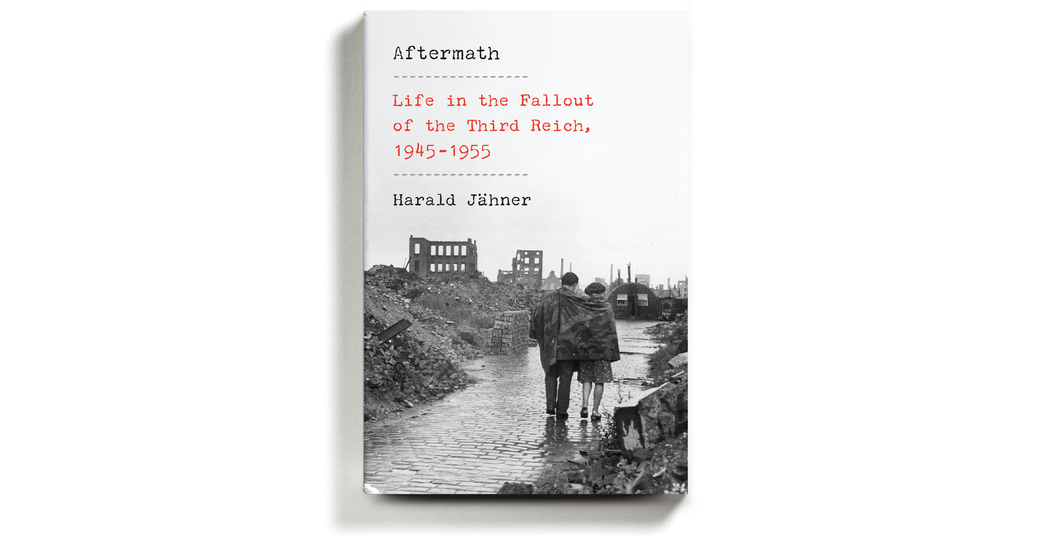It was a startling disappearing act, one for the ages. Right at the moment when Hitler killed himself in his bunker on April 30, 1945, Germany was magically transformed from a genocidal Reich to a place where there were barely any Nazis to be found.
“No one was a Nazi,” the journalist Martha Gellhorn wrote about the end of World War II in Europe, mordantly recalling how all the Germans she met insisted they had hidden a Communist or were secretly half-Jewish. The photojournalist Margaret Bourke-White heard the phrase “We didn’t know!” with such “monotonous frequency” that it sounded “like a kind of national chant for Germany.”
In “Aftermath: Life in the Fallout of the Third Reich, 1945-1955,” the Berlin-based journalist Harald Jähner is similarly skeptical, describing how the majority of surviving Germans were so preoccupied with their own suffering that the dominant mood was one of self-pity. “They saw themselves as the victims,” he writes, “and thus had the dubious good fortune of not having to think about the real ones.”
The pointedness of this sentence is quintessential Jähner; he does double duty in this fascinating book (translated into English by the gifted Shaun Whiteside), elegantly marshaling a plethora of facts while also using his critical skills to wry effect, parsing a country’s stubborn inclination toward willful delusion. Even though “Aftermath” covers historical ground, its narrative is intimate, filled with first-person accounts from articles and diaries. The original German title was “Wolfszeit,” or “Time of the Wolf.” The postwar Germans were fond of animal metaphors. Those who stockpiled supplies were “hamsters,” while those who stole from the hamsters were “hyenas.” One could never be sure what the wolf was up to, “since the ‘lone wolf’ had just as frightening a reputation as the whole pack,” Jähner writes.
This duality between the loner and the group reflected the postwar emergence of the apathetic Everyman known as Ohnemichel, a play on the name Michael and the German words for “without” and “me,” a figure whose solitary inwardness was like the flip side of the Nazi Volksgemeinschaft, or “people’s community.” It was as if the country had lurched from one extreme to the other, from collective euphoria to lonesome despair. The nonaggressive Germany of today, which hosts more than a million refugees, seemed unimaginable at the time. As Jähner puts it, “How could a nation that perpetrated the Holocaust become a dependable democratic country” — so dependable that it gets caricatured as a “paradise of mediocrity”? Considering all the chaos in the years after the war, boredom might be seen as a formidable achievement.
Jähner sets out to tell the tumultuous story of the postwar decade in all of its contradictions, conveying the breadth of experiences amid the “extreme challenges” the German people faced. With their defeat, “laws had been overruled,” he writes, “yet no one was responsible for anything.” A recent book by Volker Ullrich, “Eight Days in May,” minutely chronicled what happened in the days between Hitler’s suicide and the Wehrmacht’s unconditional surrender on May 8, 1945, pointing out that most Germans didn’t consider it a day of liberation but “an unprecedented catastrophe.” Jähner’s “Aftermath” gets going where Ullrich’s epilogue leaves off, with the Germans assiduously avoiding any reckoning with what the Nazi regime had done in their name, devoting themselves instead to clearing the rubble with what Ullrich aptly described as “grim diligence.”
Jähner gives over an entire chapter to the rubble, which was everywhere; not only was it an overwhelming physical fact, but it also made for a potent cultural symbol. There were Trümmerfilme (“rubble films”) and Trümmerliteratur (“rubble literature”); the women known as Trümmerfrauen would be retrospectively remembered as “mythical heroines,” Jähner writes. Even though any number of those women had been pressed into service as punishment for their Nazi pasts, the photographs of them in their aprons and kerchiefs, surrounded by ruins to be painstakingly removed with their shovels, were appealing and ultimately useful, offering “an excellent visual metaphor for the sense of solidarity that the broken-down German society urgently needed.”
The Trümmerfrauen also happened to reflect the country’s postwar demographic reality: In 1950, there were 1,362 women for every 1,000 men. The soldiers who did return were often maimed or psychologically destroyed. During the war, women drove trams and operated bulldozers; they learned that cities didn’t need men in order to function. Jähner tells us that the men’s consequent feelings of humiliation often weighed more heavily on their psyches than the war crimes they committed. He quotes one returning soldier complaining that his wife “had learned to say ‘I’ while I had been away.” The Germans who married in haste, during short leaves after early victories on the front, were haunted by memories of “the Nazi regime’s heyday,” Jähner writes. “Those grandiose fantasies still echoed as man and wife now sat facing one another in their new squalor.”
“Aftermath” wends its way through sex, love and modern art; the book also covers more straightforward political terrain like the repatriation of displaced persons and the official division of East and West in 1949. Jähner inevitably explores the postwar economic situation, too, showing how strictly controlled ration cards yielded a flourishing black market. People stole from their neighbors and helped each other out. “Morality didn’t just dissolve,” Jähner writes. “It adapted.” Cologne’s Cardinal Josef Frings felt moved to tell Germans that they could put the commandment of “thou shalt not steal” into perspective; they could take what they needed in order to survive. The German language adjusted accordingly, with people calling theft Fringsing, as in “I Fringsed the potatoes.” Even Cardinal Frings was eventually caught Fringsing; the British found that Cologne’s churches were full of illegally stored coal.
Jähner trains his focus on such details because it’s through them that so much of the real transformation in postwar Germany first came about. If anyone deserved punishment and retribution, it was the Germans after the war — Jähner unsparingly points to the tendency of many to indulge “so expansively in their own suffering,” to reach for stock platitudes that made it possible for “even the most devoted Hitler-worshippers to feel duped rather than guilty.”
But top-down attempts by the Allies to “re-educate” the Germans into recognizing what they had done could only go so far with a populace that averted its gaze; the creation of civil society required a “change of mentality” that emerged when people were forced in their everyday lives to confront the reality before them. A robust economic recovery in both the East and the West was a boon, Jähner says, but such “good fortune” had “nothing to do with historical justice.”
Germany’s current self-image as a country that has wholly come to terms with its past might be, this book suggests, a bit of wishful thinking. “How stable and open to discussion German democracy really is has not yet been put to the test in a truly existential crisis,” Jähner writes. He ends by quoting the philosopher Karl Jaspers, who in 1946 warned against the blind spots that were so tempting to cultivate: “Let us actually seek out that which contradicts us.”



























